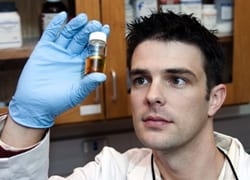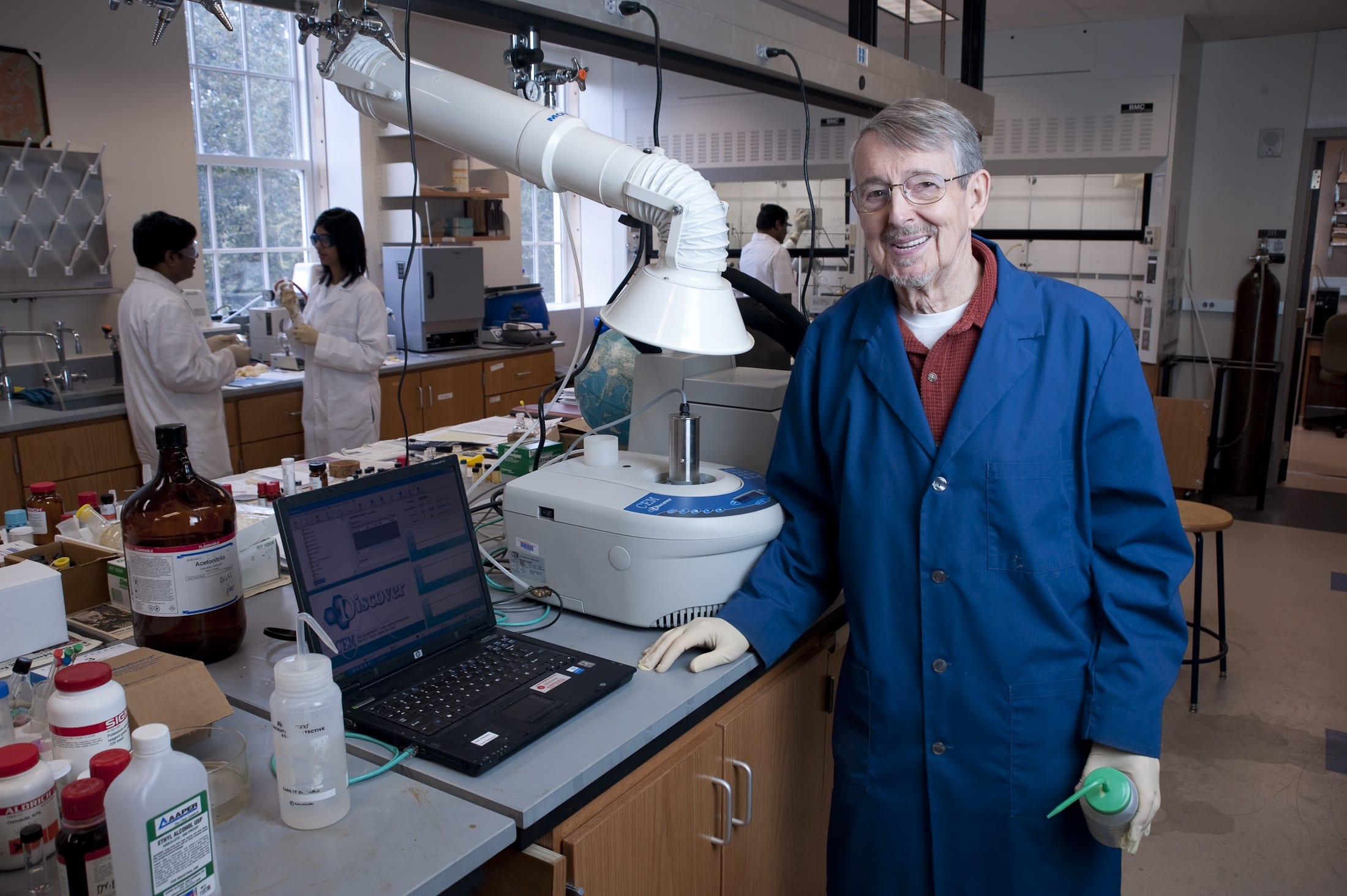David Son uses some of the Earth’s most common building blocks to create complex new materials with potential wide-ranging applications.
Son conducts research on polymers containing silicon. One of the main elements in the Earth’s crust, silicon is the major ingredient in common sand, and is readily available.
“It’s fairly easy and inexpensive to transform silicon into compounds we can manipulate,” says Son, associate professor in SMU’s Department of Chemistry in Dedman College. “And because silicon is an inorganic element, it gives materials great stability against temperature changes and oxidation.”
Silicon-containing polymers might be used to create more heat-resistant and longer-lasting plastic materials than common organic polymers such as polyethylene or PVC, Son says. One example is the silicone ovenware widely available in stores. Pans made of silicon polymers are temperature-safe, naturally nonstick, and so flexible that they can be turned inside out to remove baked goods.
Most polymers are what chemists call the straight-chain type, with each molecule consisting of atoms laid more or less end-to-end. Son’s research focuses on a new class of polymers called dendrimers, also known as “arborols” for their molecular resemblance to trees with many branches.
The dendrimers’ structure gives them many advantages.
“You can dissolve them much more easily in solvents,” Son says. “Because the molecules are shaped like balls, they roll right over each other and don’t get tangled up the way straight-chain polymers do, so you can use them as lubricants.”
Other possible uses include new drugs in which medicines are encapsulated in the dendrimers’ branches, transported to targeted areas of the body, and then stimulated to release medication directly to those sites.
Most recently, Son has begun creating materials that merge metal ions with organic compounds called ligands. Ligands can be as simple as water or as complex as ethylenediaminetetraacetic acid, or EDTA, a compound commonly used as an anticoagulant in medicine.
Son is especially interested in how nitrogen- and sulfur-based ligands bond with silver, gold, palladium, and platinum, which are elements with well-established catalytic properties. He hopes to create compounds that can be used to improve everything from optics to plastics manufacturing.
Platinum and palladium compounds are used industrially to spark reactions in other materials. Creating better catalysts, Son says, could enable more efficient manufacturing processes, for example, at lower temperatures or with fewer defects.
Son received his Ph.D. degree in organic chemistry from MIT and has conducted research at the Argonne National Laboratory and the Naval Research Laboratory.
Related links:
SMU Research 2008: Faculty mentor students
David Son
Department of Chemistry
Dedman College of Humanities and Sciences
 Other applications of LEDs include traffic lights, railroad crossing signals, exit signs and digital clocks. Their major contribution is for illumination, leading to a great reduction in energy needs.
Other applications of LEDs include traffic lights, railroad crossing signals, exit signs and digital clocks. Their major contribution is for illumination, leading to a great reduction in energy needs.
